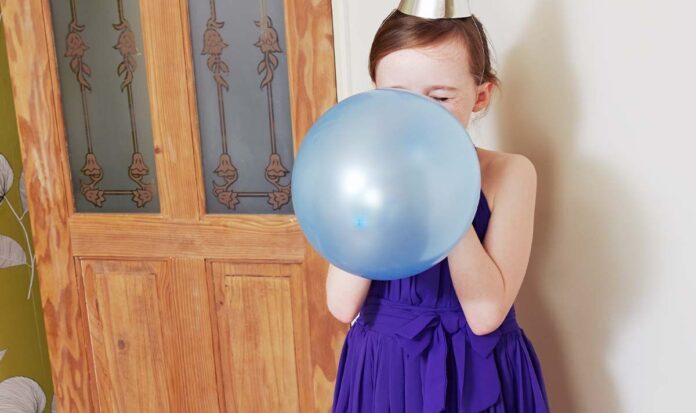The amount of helium balloons on sale tend to swell around festivities, including Halloween. And with this, young people are often tempted to open them and suck the helium out. But a new case report entitled ‘Cerebral Arterial Gas Embolism due to Helium Inhalation from a High-Pressure Gas Cylinder”, is a reminder of the dangers of swapping your oxygen for helium.The report, published in Case Reports in Emergency Medicine, depicts a 12-year-old girl who was rushed to the hospital after taking just ‘one inhale’ of helium gas from a ‘high-pressure gas cylinder’.These are the tanks that are used to blow up balloons at events or party shops.The girl started coughing ‘within a few seconds of inhaling helium’ and then passed out for a few minutes.READ MORE: Acholic stools are ‘the most common’ sign of pancreatic cancer in ‘initial’ stages [SYMPTOMS] Helium caused the girl to have a brain embolism (Image: GETTY)The report adds: ‘Upon awakening, the patient was disoriented and complained of headache, chest pain, visual deficits, and weakness.’Things were so bad that the girl couldn’t even walk ‘due to right-sided weakness’.The girl was taken to a nearby emergency room where she was given different tests.It turns out she suffered from a dangerous cerebral arterial gas embolism. This is when the blood supplying the brain is disrupted by gas bubbles, causing stroke-like symptoms.DON’T MISS:95% of heart attack survivors report experiencing two symptoms 1 month prior to the event [SURVEY]Steatorrhoea is ‘key’ symptom of pancreatic cancer that strikes on the toilet – expert [INSIGHT]Woman, 49, among reported cases of turmeric supplements linked to liver damage [CASE REPORT] Pneumothorax can occur from inhaling pressurised helium (Image: GETTY) Helium displaces oxygen when you inhale it (Image: GETTY)When you inhale helium, it displaces oxygen. This means that your body only gets helium and not oxygen, which is vital for every activity in your body.There have been reports over the years of children dying from asphyxiation after inhaling helium from a balloon.Although gas embolisms are most commonly associated with scuba diving, it’s still worth noting the signs – just in case you see a child inhaling helium.According to the NHS, these are the symptoms of a gas embolism:Joint or muscle painLow blood pressure, which may cause dizzinessAn irregular heartbeatBreathlessness and fast breathingBlurred visionChest painStrong feelings of anxietyItchy skinA blue tinge to the skin, lips or tongue (cyanosis)Bloody froth from the mouthParalysis or weakness, possibly of one or more limbsSeizures or fitsLoss of consciousness.
12-year-old girl suffers brain embolism after ‘one inhale’ of helium
Sourceexpress.co.uk
RELATED ARTICLES


